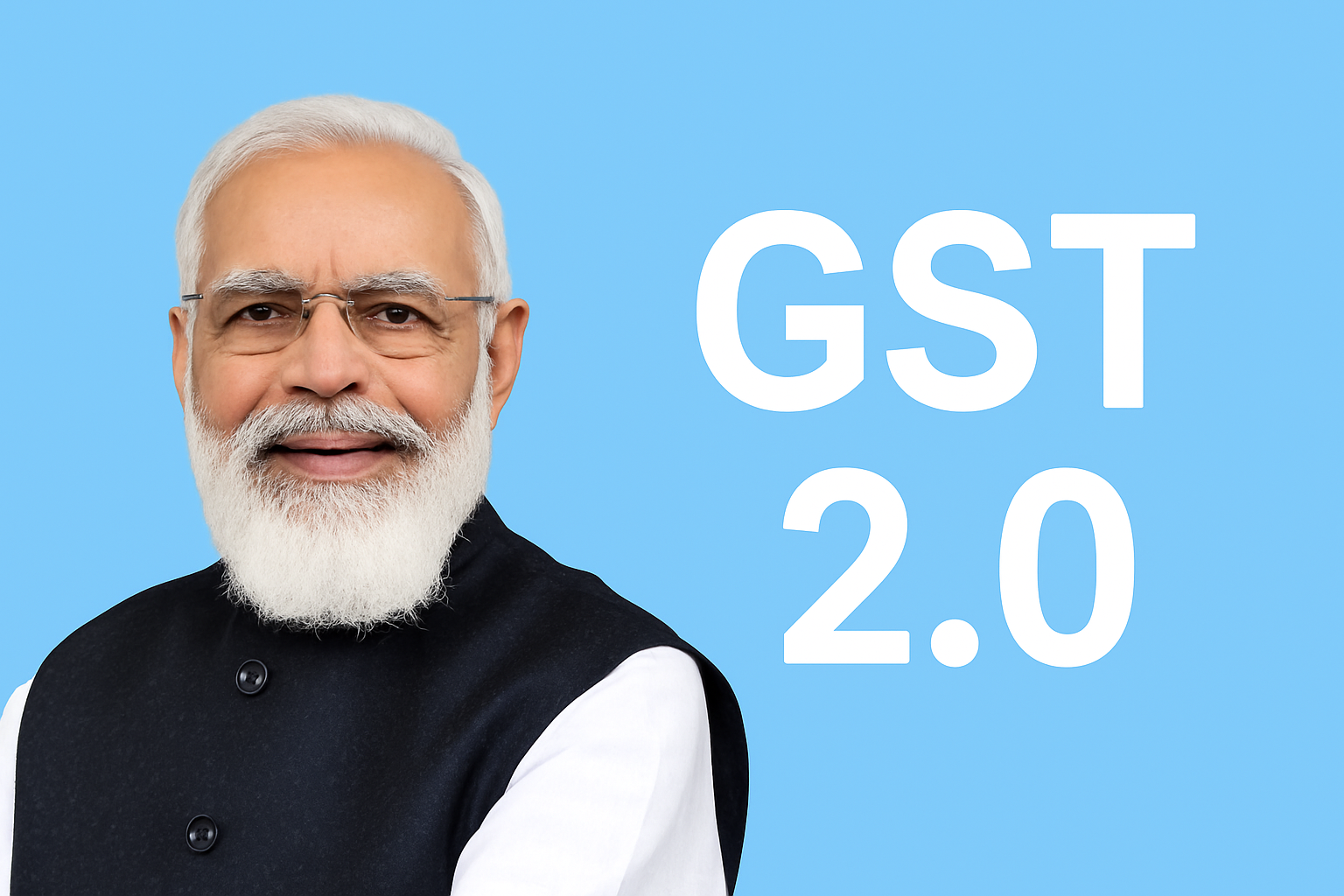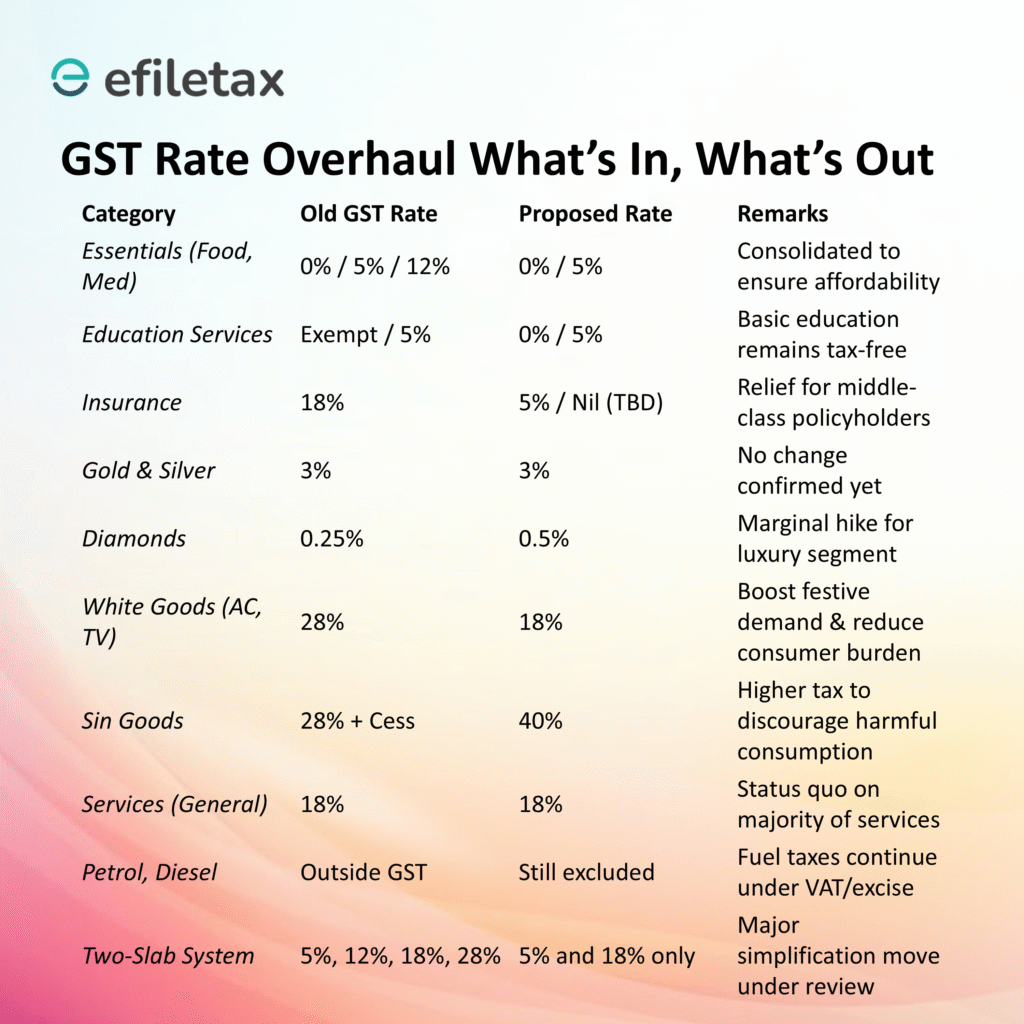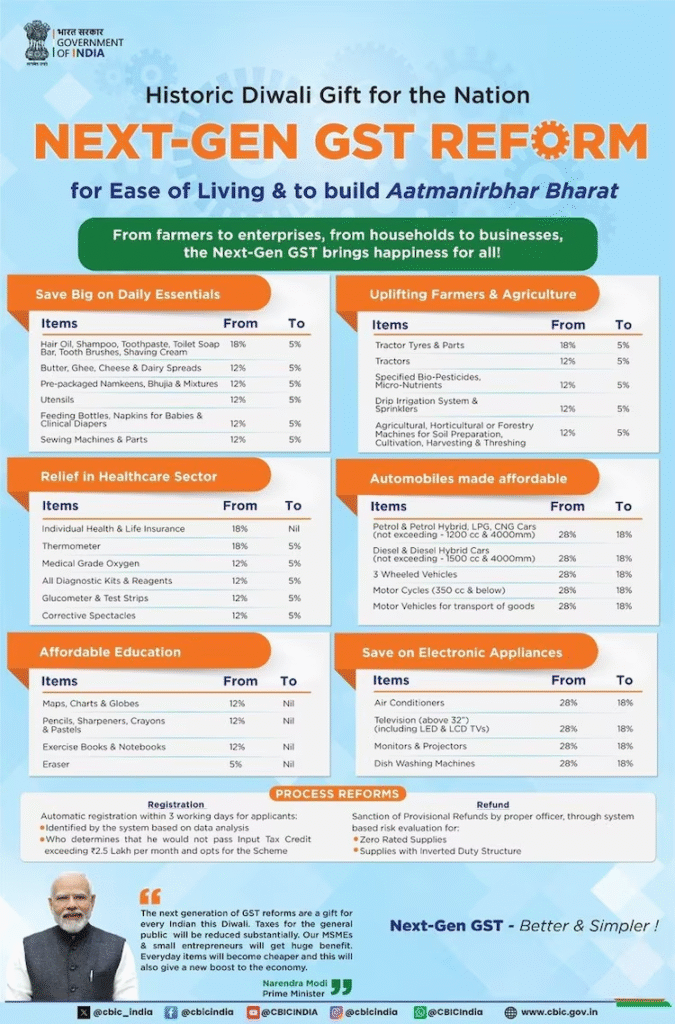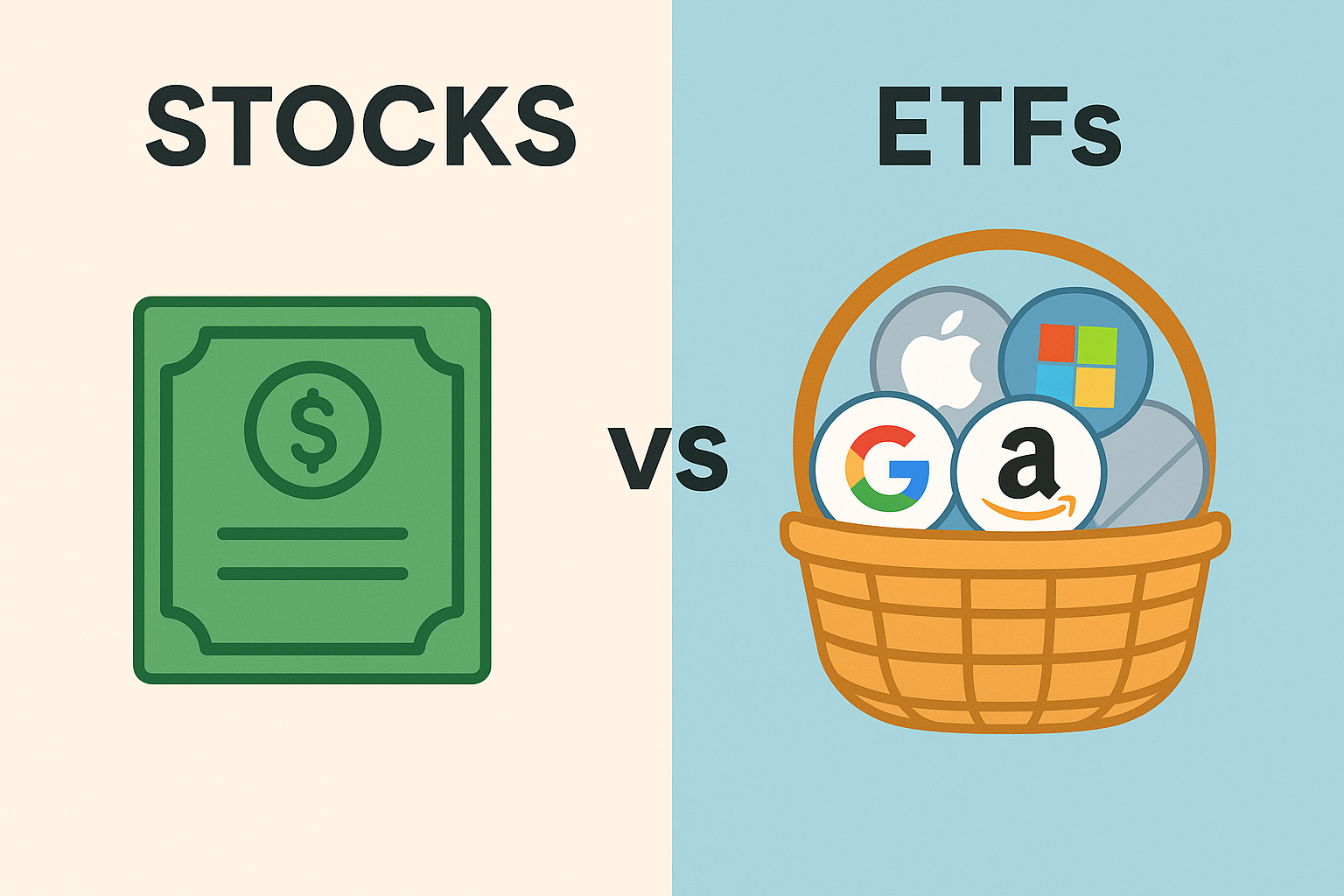GST 2.0 in India: Launch Date, Key Features, and How It Impacts Businesses & Consumers

📰 What is GST 2.0?
The Government of India has rolled out GST 2.0, an upgraded version of the Goods and Services Tax (GST) system that was first introduced in 2017. While the original GST was designed to unify India’s fragmented indirect tax structure, GST 2.0 goes a step further by integrating advanced technology, improved compliance mechanisms, and simplified filing processes.
This reform comes at a time when India’s economy is pushing toward greater digitalization, transparency, and global competitiveness.
📅 Effective Date of GST 2.0
GST 2.0 is scheduled to come into effect from September 22, 2025. Businesses and tax professionals are already preparing for the transition, as the government has begun issuing detailed guidelines and compliance frameworks ahead of the rollout.

⚙️ Key Features of GST 2.0
GST 2.0 introduces several new elements designed to fix challenges from the previous system:
- Simplified Return Filing System
- A single, consolidated return form will replace multiple filings, reducing the compliance burden for small and medium enterprises (SMEs).
- Real-Time Invoice Matching
- Automated invoice matching will reduce fraud and tax evasion while ensuring better input tax credit availability.
- AI-Powered Compliance Monitoring
- Machine learning and AI tools will track suspicious transactions, improving compliance without excessive manual checks.
- E-Invoicing Expansion
- E-invoicing will be made mandatory for more categories of businesses, streamlining B2B and B2C transactions.
- Sector-Specific Customizations
- Industries like manufacturing, e-commerce, and exports will see customized compliance modules to address unique operational needs.
- Faster Refunds & Settlements
- Automated refund processing will speed up GST refunds for exporters and businesses with input tax credits.
🔍 Impact of GST 2.0 on Businesses
- Reduced Compliance Burden: SMEs will find it easier to file returns with fewer forms and simplified processes.
- Improved Transparency: Real-time data sharing between suppliers, buyers, and the government will reduce tax evasion.
- Digital Integration: Businesses will need to upgrade accounting systems to align with e-invoicing and real-time data uploads.
- Cash Flow Efficiency: Faster refunds will improve working capital cycles, especially for exporters.
👥 Impact of GST 2.0 on Consumers
- Price Stability: With reduced tax leakage, consumers may benefit from more stable pricing in goods and services.
- Greater Trust: Transparent invoicing and tax credit tracking will build consumer confidence in the tax system.
- Ease of Purchase: Digital receipts and standardized invoicing across industries will simplify consumer transactions.

📊 Macroeconomic Outlook
The GST 2.0 rollout is expected to:
- Increase government revenues by improving tax compliance.
- Encourage foreign investment by showcasing India’s transparent taxation environment.
- Boost economic growth, especially in digital-first sectors like e-commerce, fintech, and logistics.
If executed effectively, GST 2.0 could play a role similar to the 2017 GST launch, but with far smoother implementation thanks to digital advancements.
📌 Conclusion: A Step Toward Smarter Taxation
GST 2.0 is not just a tax reform—it is a digital transformation of India’s taxation system. By combining simplified compliance, AI-powered monitoring, and faster settlements, it aims to create a more efficient, transparent, and business-friendly ecosystem – GST 2.0 India.
For businesses, preparing ahead of the October 2025 rollout will be crucial. For consumers, the reform promises smoother transactions and fairer pricing.
As India moves closer to becoming a $5 trillion economy, GST 2.0 could be the structural push needed to streamline taxation and accelerate growth.
#GST2 #IndiaTaxReform #GSTIndia #IndianEconomy #GSTUpdate #FinanceNews #BusinessIndia #TaxReform #GSTCompliance




